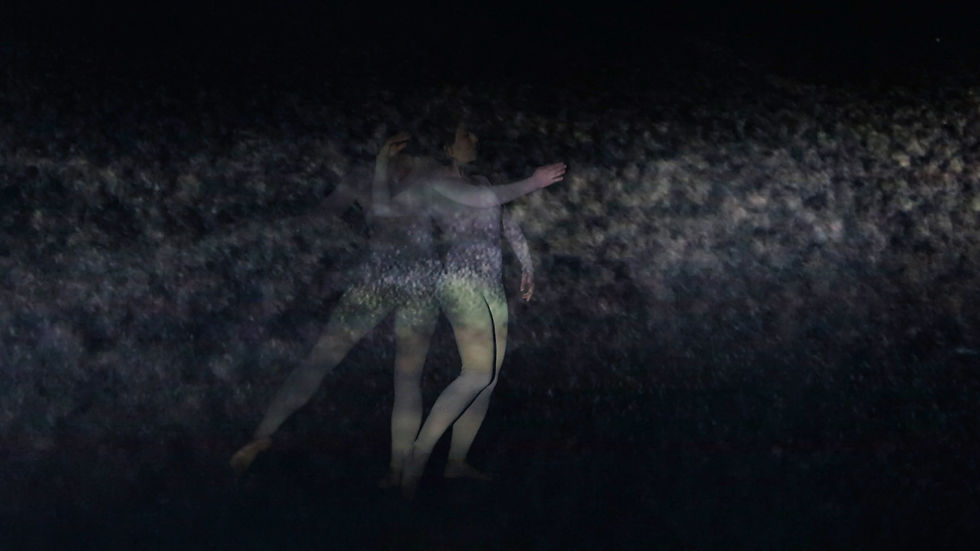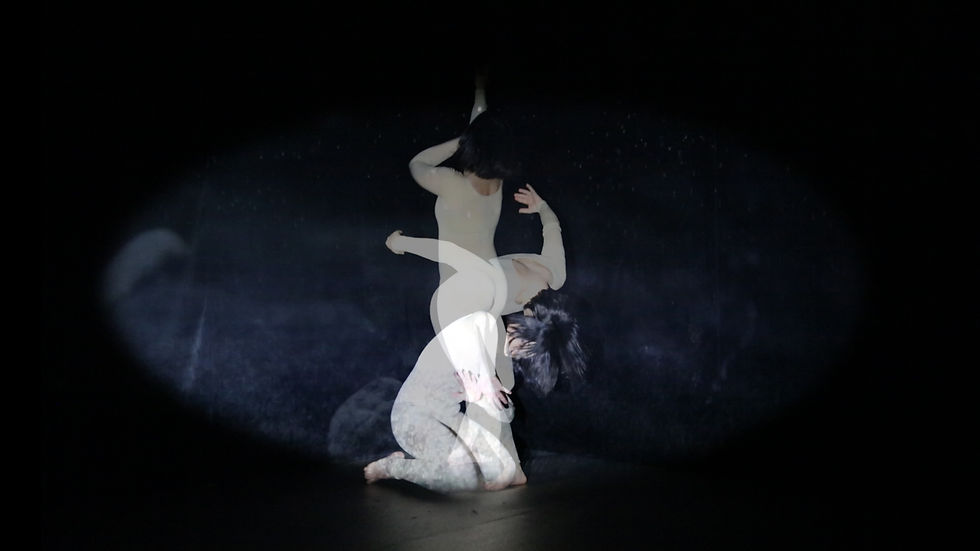Why to apply Theory into Practice?
- Paola Napolitano

- Mar 14, 2021
- 3 min read
Theory and Practice have always sound as a dilemma to me.
I have always found theories so fascinating. My tendency to over-theorize has sometimes led my creativity to get stuck, as wanting to back it up with logical reasoning and prove it was 'right' or 'wrong'. In the attempt to bypass theory, pure movement based research, in the studio, often felt directionless and so energy consuming to me. As a seeking spirit in nature, theories are just my cup of tea. However, I wonder if the theory gets lost in the translation from one medium into another, therefore if it is fair to talk about theory application, or it is just our interpretation of it, so a trans-creation.
What was/is the compass for my movement research? Theory or body experience, or both?
With this doubt in mind, it is incredibly inspiring to observe HOW other artists start their research from a theory and apply it to their artistic projects.
It is the case of Angela Woodhouse, Senior Lecturer in Dance at the Middlesex University in London. In showing her work during one of our MAPP sessions, A. Woodhouse explained she has often referred to the philosophy of Merleau-Ponty (1908-1961) as a starting point for her research. Ponty's philosophy brings human experience to the centre of his Existentialist inquiries. Ponty sees the network of human relationships as concretization or embodiment of Self identity.
Reflecting on various philosophers and theorists, I can identify traits of my research and practice with a few of them. Reading 'Learning Theories Simplified' by Bob Bates, helped me visualize a bigger picture of learning theorists, and understand how their considerations have been the foundations for following theories, on which they were built upon.
For example, B. Bates explains how the nature-nurture debate between Rene Descartes (1596-1650) and John Locke (1632-1704) has given rise to current sciences, such as Biology, Psychoanalysis, Cognitivism, Behaviorism, amongst the others.
This debate discussed about whether Truth and Knowledge are innate or shaped through experience.
Being able to look at the big picture and contextualize the frame of learning theories has enabled me to understand there is no separation between Theory and Practice, and again, as D. Schon said in 'The Reflective Practitioner' book, it's a matter of intention from the learner side. As long as a learner sees continuation between inwards and outwards learning, there should not be any dualistic dilemma to perceive reality, as Experiential Learning.
Through a collection of images displaying a few projects, such as Censor(ed), Close Distance, endings, and Dreams and Ruins, A. Woodhouse emphasized the importance of using visual arts elements, audience interaction, spatial inquiry and collaborations. It was interesting tor me to become aware of how Theory can develop into large open spaces, interactive performances, bright light, staging material, site-specific work. They are things I have always been attracted by, but never linked to any theoretical notions. Her portfolio can be browsed at Dreams & Ruins (angelawoodhouse.co.uk)
Thinking of my application of Theory into Practice, I can think of a collaborative project 'Scales of Intangibility' I did with visual artist Susan Eyre. In her research the artist was looking at the relation between Universe and its particles. In the development process she collected a multitude of scientific resources, and asked me to create movement, based on Rudolf Laban work, in particular on the Dodecahedron structure.
It was an incredibly rewarding research in terms of movement creation, because I did not have any reference study material on this form from my previous LBMS training. The research method I used was merely experience based, embodying the dodecahedral qualities through experiential movement. Details about the project can be found here Dancer Artist Physical Theatre performer Teacher (movitam.com).
I now realize separating Theory and Practice is a mind construct, since our actions and 'inner theories' reflect each other.
These are a few images from the project 'Scales of Intangibility' showing Theory to Application. Photo Credit Susan Eyre Susan Eyre Profile



































Comments